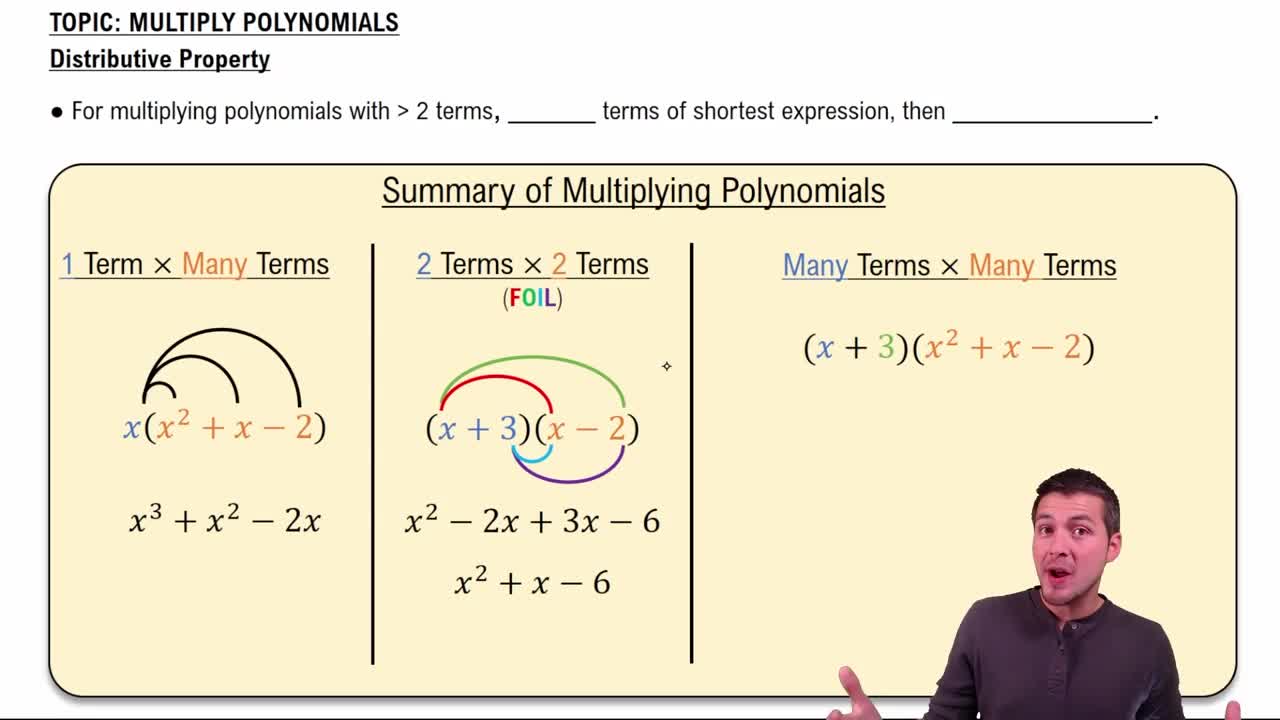Table of contents
- 0. Review of Algebra4h 16m
- 1. Equations & Inequalities3h 18m
- 2. Graphs of Equations43m
- 3. Functions2h 17m
- 4. Polynomial Functions1h 44m
- 5. Rational Functions1h 23m
- 6. Exponential & Logarithmic Functions2h 28m
- 7. Systems of Equations & Matrices4h 6m
- 8. Conic Sections2h 23m
- 9. Sequences, Series, & Induction1h 19m
- 10. Combinatorics & Probability1h 45m
1. Equations & Inequalities
Linear Equations
Problem 105a
Textbook Question
In Exercises 99–106, solve each equation. 4x + 13 - {2x - [4(x - 3) - 5]} = 2(x - 6)
 Verified step by step guidance
Verified step by step guidance1
Start by simplifying the expression inside the innermost parentheses: \(4(x - 3)\). Distribute the 4 to both terms inside the parentheses.
Simplify the expression \(4(x - 3) - 5\) by subtracting 5 from the result of the distribution.
Next, simplify the expression \{2x - [result from previous step]\} by distributing the negative sign across the terms inside the brackets.
Combine like terms on the left side of the equation: \(4x + 13 - [result from previous step]\).
Finally, set the simplified left side equal to the right side \(2(x - 6)\) and solve for \(x\) by isolating \(x\) on one side of the equation.
Recommended similar problem, with video answer:
 Verified Solution
Verified SolutionThis video solution was recommended by our tutors as helpful for the problem above
Video duration:
2mPlay a video:
Was this helpful?
Key Concepts
Here are the essential concepts you must grasp in order to answer the question correctly.
Distributive Property
The distributive property states that a(b + c) = ab + ac. This property is essential for simplifying expressions where a term is multiplied by a sum or difference. In the given equation, applying the distributive property will help in expanding terms like 2(x - 6) and 4(x - 3) effectively.
Recommended video:
Guided course

Multiply Polynomials Using the Distributive Property
Combining Like Terms
Combining like terms involves simplifying expressions by adding or subtracting terms that have the same variable raised to the same power. This concept is crucial in solving equations, as it allows for the reduction of complex expressions into simpler forms, making it easier to isolate the variable.
Recommended video:

Combinations
Solving Linear Equations
Solving linear equations involves finding the value of the variable that makes the equation true. This process typically includes isolating the variable on one side of the equation through operations such as addition, subtraction, multiplication, and division. Understanding this concept is fundamental to arriving at the solution for the given equation.
Recommended video:

Solving Linear Equations with Fractions

 7:48m
7:48mWatch next
Master Introduction to Solving Linear Equtions with a bite sized video explanation from Callie
Start learningRelated Videos
Related Practice





